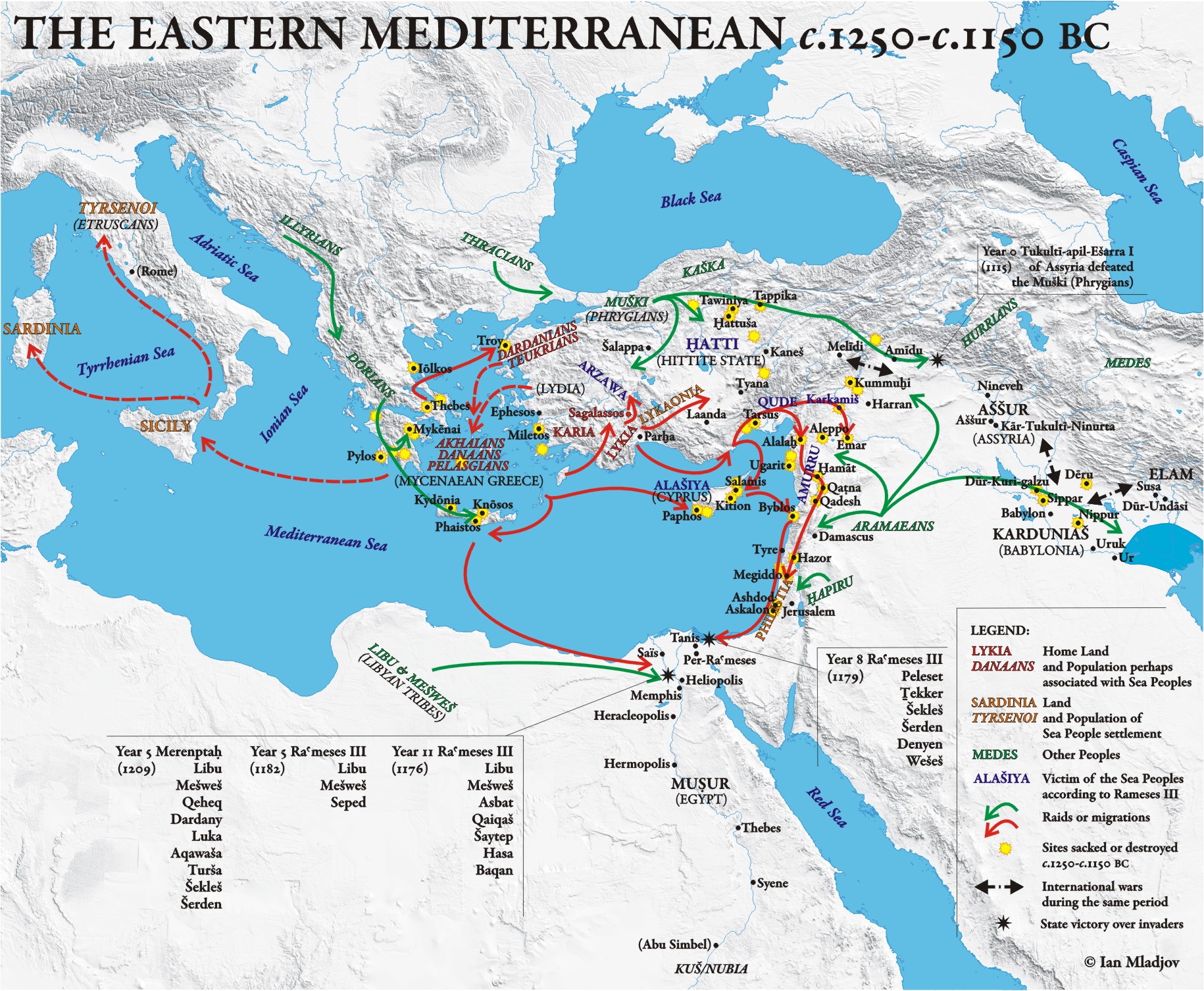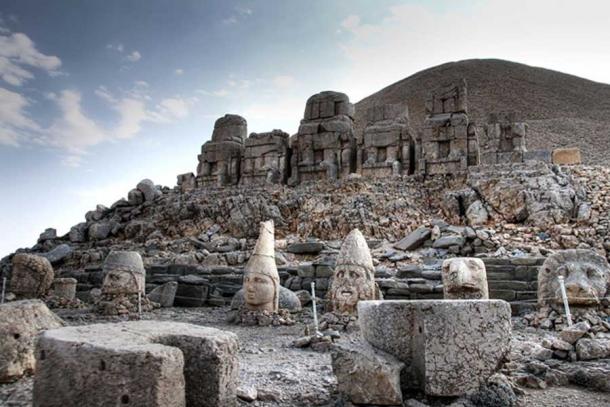A key difference between historians and archaeologists is that one will look to the record on the ground and the other looks to the written records. In the case of historians this means relying on ancient texts of the ancient Greeks and in some cases translations of tablets. The lack of information leads to speculation and two such speculations, which don’t stand up to archaeological scrutiny, but are still advocated today are the invasion of the Hittites over the Hattian and the Phygrians conquest of the Hittites .
The Hittites, an Indo-European people supposedly invaded from the east or west and conquered the non Indo-European Hattians. Steadman & McMahon point out that the Hittites never migrated as indicated in the map below. The original view that this map was based upon has been discredited and now it is viewed that the Hittites did not migrate from either the Armenian plateau or from the Balkans, but were always there. The Oxford Handbook of Ancient Anatolia is an excellent read.

The above map would be approximately 1900 BC and the below map, by Ian Mladjov, is around 1250 to 1150. These two timescales mark the beginning and the end of the Hittite Empire, separated by two dark ages.

After the fall of the Hittites the Phryrians, according to Herodotus, invaded from Thrace into the Hittite Empire all the way to Armenia. This account has been promoted by historians for a very long time. However, as Robert Drews notes on P. 65 of The End of the Bronze Age
“Although many historians continue to believe in a Phrygian migration from Europe c.a. 1200 B.C., the idea has been abandoned by Anatolian archaeologists. …None of the Hittite sites was there evidence for newcomers after the destruction.”
Work on the Haplgroup R1b, and the The Armenian hypothesis of the Proto-Indo-European Urheimat, proposed by Georgian (T. Gamkrelidze) and Russian linguist V. V. Ivanov in 1985, suggests that the Proto-Indo-European language was spoken during the 4th millennium BC in the Armenian Highlands.

The map above shows the connection with the R1b as Armenia and Ossetia remain dark pockets in the Indo-European homeland. Also of note is San Marino is clearly identifed in Italy.
Following this argument in Gamkrelidze & Ivanov’s 1990 article in Scientific American and Grey & Atkinson 2003 article as well as the recognition by Drew’s 1994 book, at the least the ancient people who would become the Armenians, were also the Hittites, and the Phygrians and their invention of key technologies, the wheel, metallurgy, viticulture and weapons of war such as the compound bow, halberd axe and chariot impacted human civilization on a broader scale than we recognize and much more than historians such as Richard Hovannisian give credit for.
In the end the disconnect between historians, archaeologists, linguists and geneticists operate more like the blind men and the elephant than piecing together a much more interesting story of the origins and expansion of the Indo-European peoples.
About me: Sean McClure is a former Senior Advisor at the White House. Sean is currently the Suspension and Debarment Advisor to the Department of the Treasury and with over 15 years of experience working at the White House, Department of the Treasury, USAID, and Department of State. He has traveled extensively to 35 countries in Africa, Asia, Latin America and Europe.



